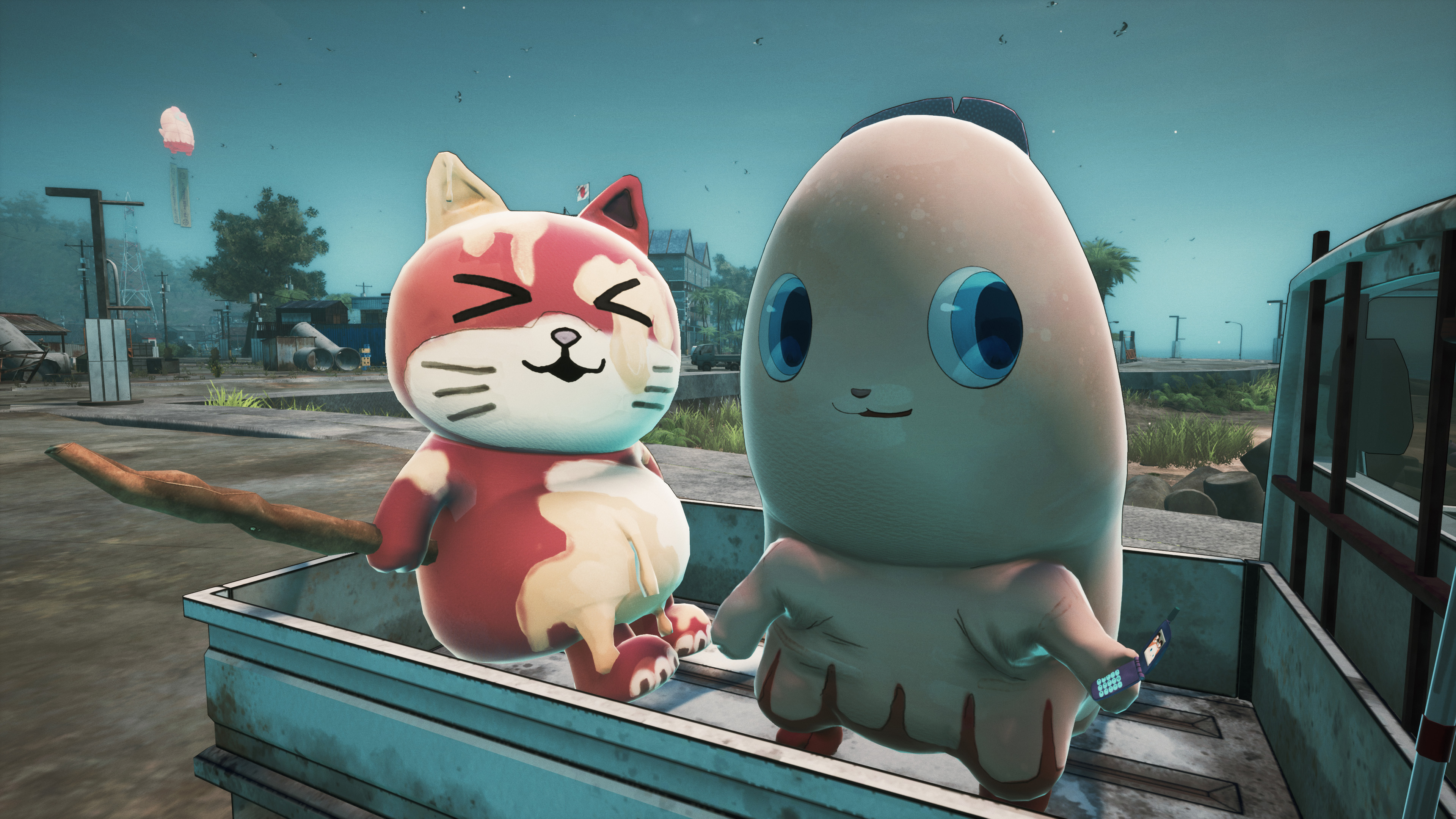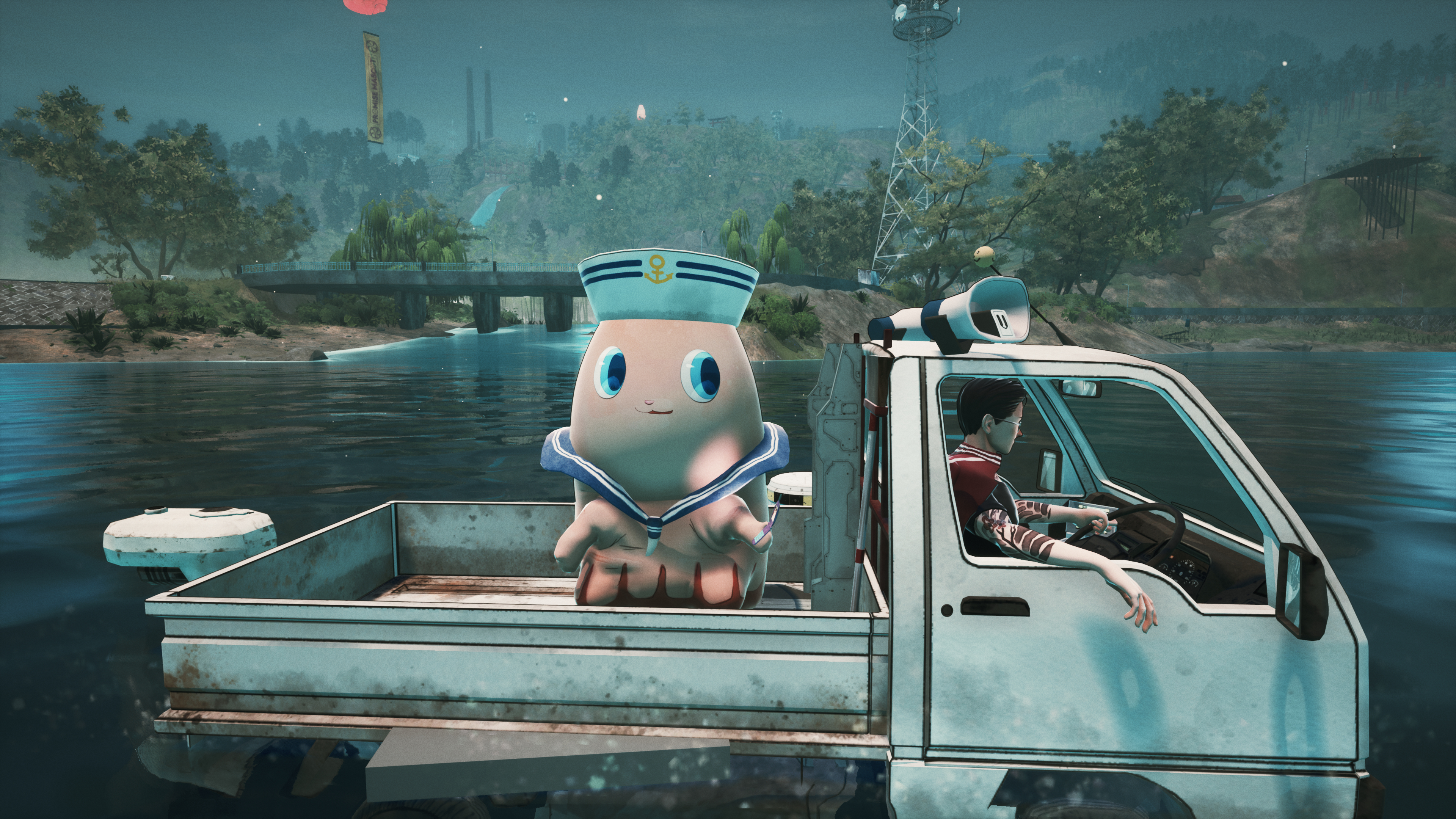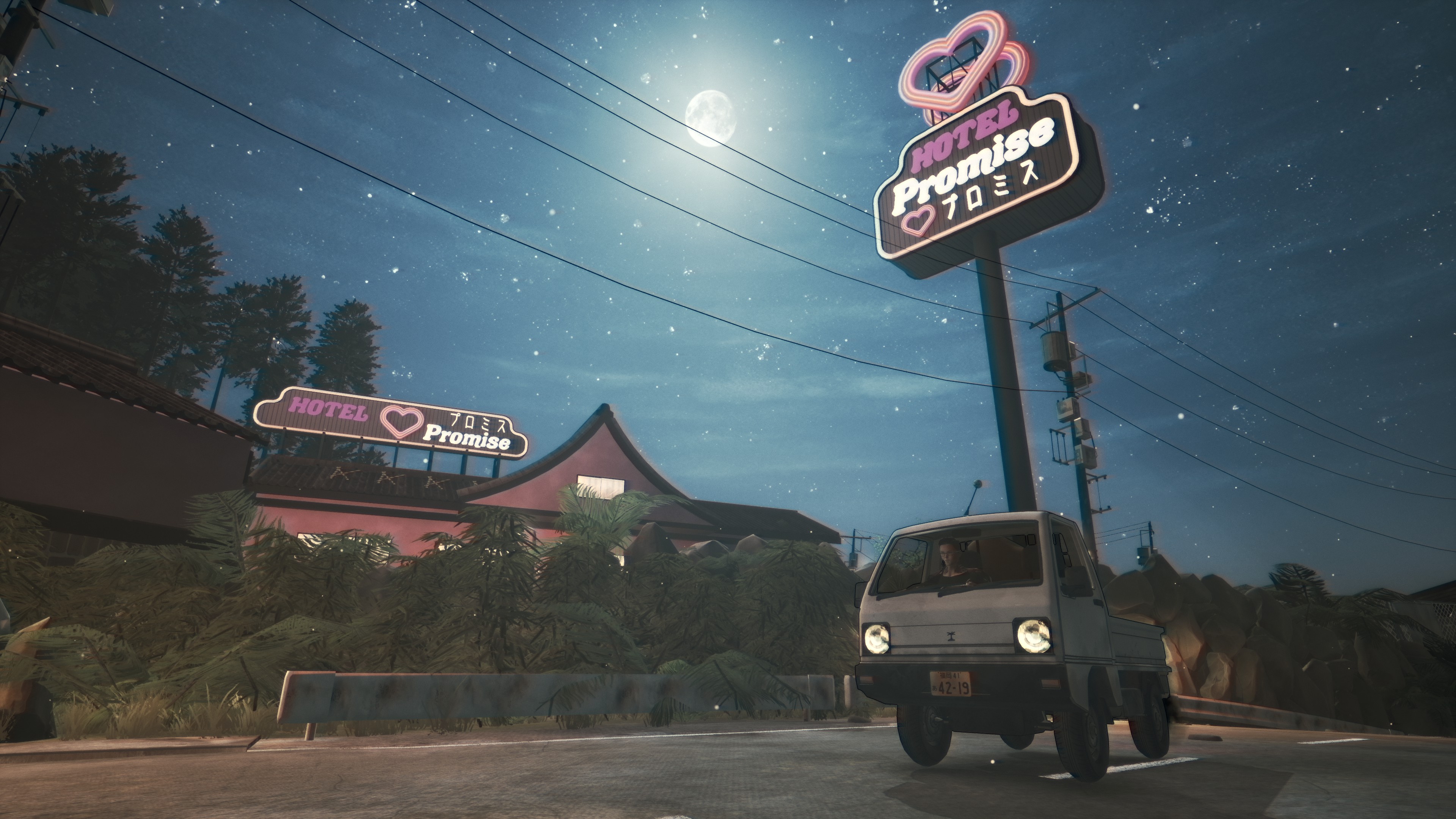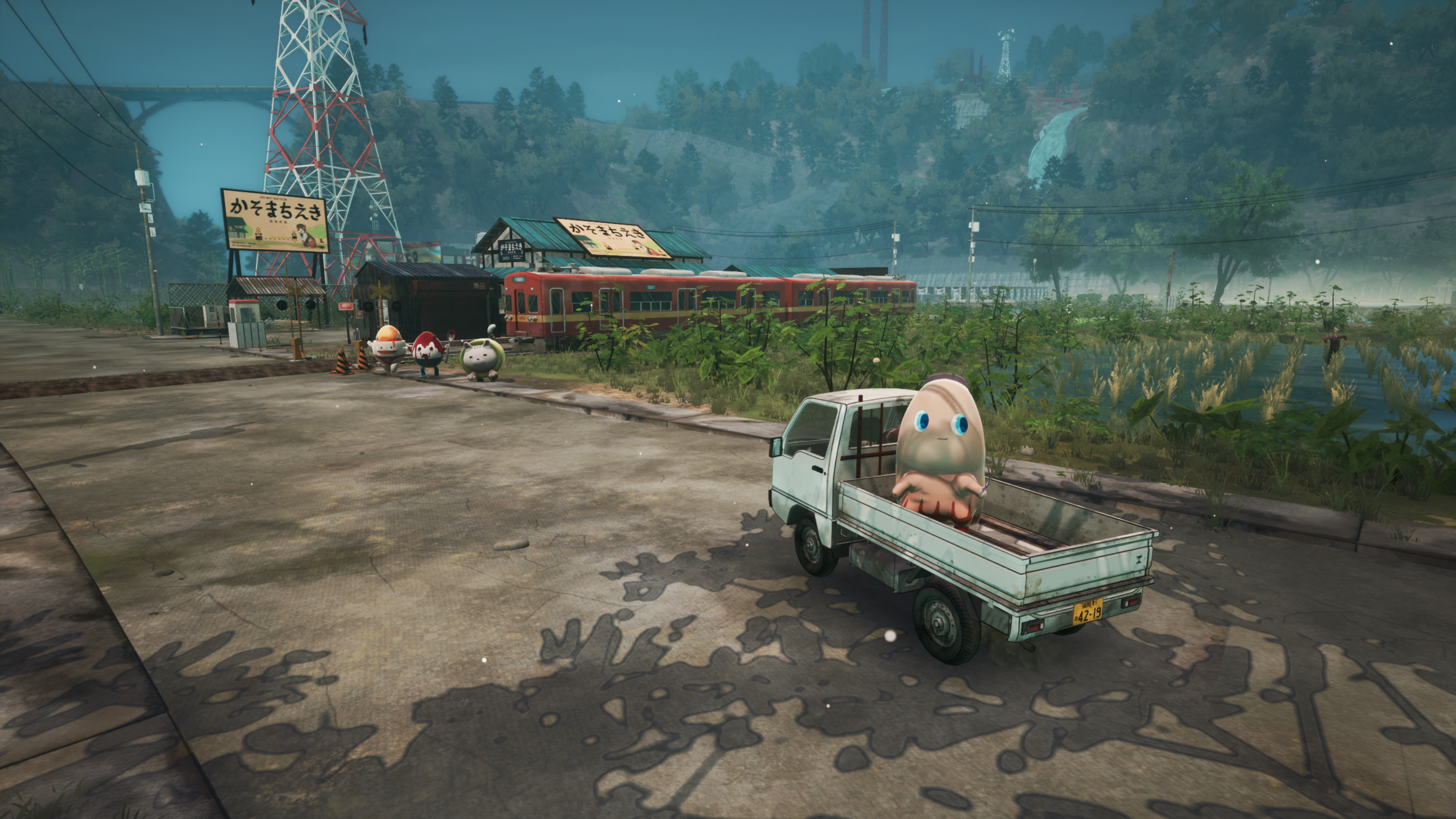
The early idea for Promise Mascot Agency was going to be very different from Kaizen Game Works' open world detective adventure game Paradise Killer. It had stemmed from art director Rachel Noy's desire to create a management sim akin to the Kairosoft's management games, like Game Dev Story presented in pixel art.
"We liked the idea but we knew that we wanted to do something bigger than just a 2D thing," says studio co-founder and game director Oli Clarke Smith. "Kairosoft also has a really good production line of those games and we were worried that we'd be entering a fairly crowded market."
The idea that you would be playing an ex-yakuza managing this mascot agency (incidentally played by Takaya Kuroda, the voice of legendary ex-yakuza Kazuma Kiryu from Sega's Yakuza / Like A Dragon series) had also been initially more of an afterthought as Smith admits he added this character and vague premise to the pitch document, since the studio was already known for narrative-based games: "I said to members of the team, 'Don't worry, we'll change it later,' and then it got signed."

But the vision for what this management game began taking form once the studio received an email with an offer for them to work with Ikumi Nakamura, the former creative director of Ghostwire: Tokyo (one of the best horror games on PS5) who was in the interim of forming her own game studio, Unseen.
Her role was essentially a concept director, given free reign to just come up with lots of unusual designs that resulted in what could be best described as an 'art bible' for the game, albeit also more "a book of options" rather than just strict designs to dogmatically follow.
"We had a general direction but then we're very much like, 'You're the expert, go for it,'" says Rachel Noy. "It's quite nice to just hand stuff over to people and let them put their personality and ideas in the game."

As well as being Japanese and the ingrained cultural knowledge for the game's setting, Nakamura is also a keen urban explorer (exploring usually abandoned man-made structures or towns) with a love of the supernatural, and these interests also manifest in a lot of the designs for Promise Mascot Agency.
This included the main location, an open world town called Kasomachi (literally translated as 'depopulated town'), which would also inform how the team would shape the story.
"We originally expected to set it in a city environment but she suggested a rundown deserted town on the coast of Fukuoka," Smith explains. "So now the story is about people leaving a dying town in the countryside to go to the city and what is left of that town and how corruption can set in with the power that's left there. So it's no longer just about running a mascot agency, it's about you coming in to revitalise it, and about creating a world that can help people achieve their dreams."

While the game is technically set in the present day, Kasomachi evokes the analogue aesthetics of Showa-era Japan (including the option to present the visuals with a vintage camera filter).
"We took a lot of reference from old manga, Japanese children's advertising for toys and sweets, and we loved the way a lot of paper advertisements looked, quite flat and graphic," Noy explains. "We wanted to have the feeling of a town stuck in the past, so we took a lot of analogue retro vibes along with us but without a tight time period."
The mascots naturally play an important role, who are more like yokai entities rather than someone in an oversized suit. In keeping with the theme of a dying town, they're also somewhat the dregs of the trade, from one resembling a severed tiny finger to a tofu who can't stop crying - a literal soy boy.
"There's two different types of mascot games you could make, a more traditional cute mascot-style game, and then ours, that are a lot more creepy and grotesque," Smith says. "But I think we wouldn't have landed that without [Nakamura] pushing that."

We needed to do 3D because the physical comedy of the mascots demanded it
Noy adds that while there were actually a lot of options provided by Nakamura, it was the grotesque ones that stood out and they gravitated towards including. "We also picked the ones that would fit the gameplay because obviously they have to get stuck in doors, some of them were too tall and skinny and you can't push them through a door, so there's practical things that we had to think about."
This was also the reason for rendering the characters as 3D models rather than just the 2D character art seen during dialogue sequences. "It was hard to do because we've not had the skill set for doing 3D characters in-house before and we bit off more than we could chew," Smith explains, adding: "But we needed to do 3D because the physical comedy of the mascots demanded it. We need to show mascots stuck in doors and falling down stairs."
Promise Mascot Agency releases on PC, Switch, PS5 and Xbox Series X/S on 10 April 2025. You can play the demo now on Steam.







